Give yourself a boost with this homemade Chocolate Superfood Kombucha. Made with maca, mushrooms, and cacao.
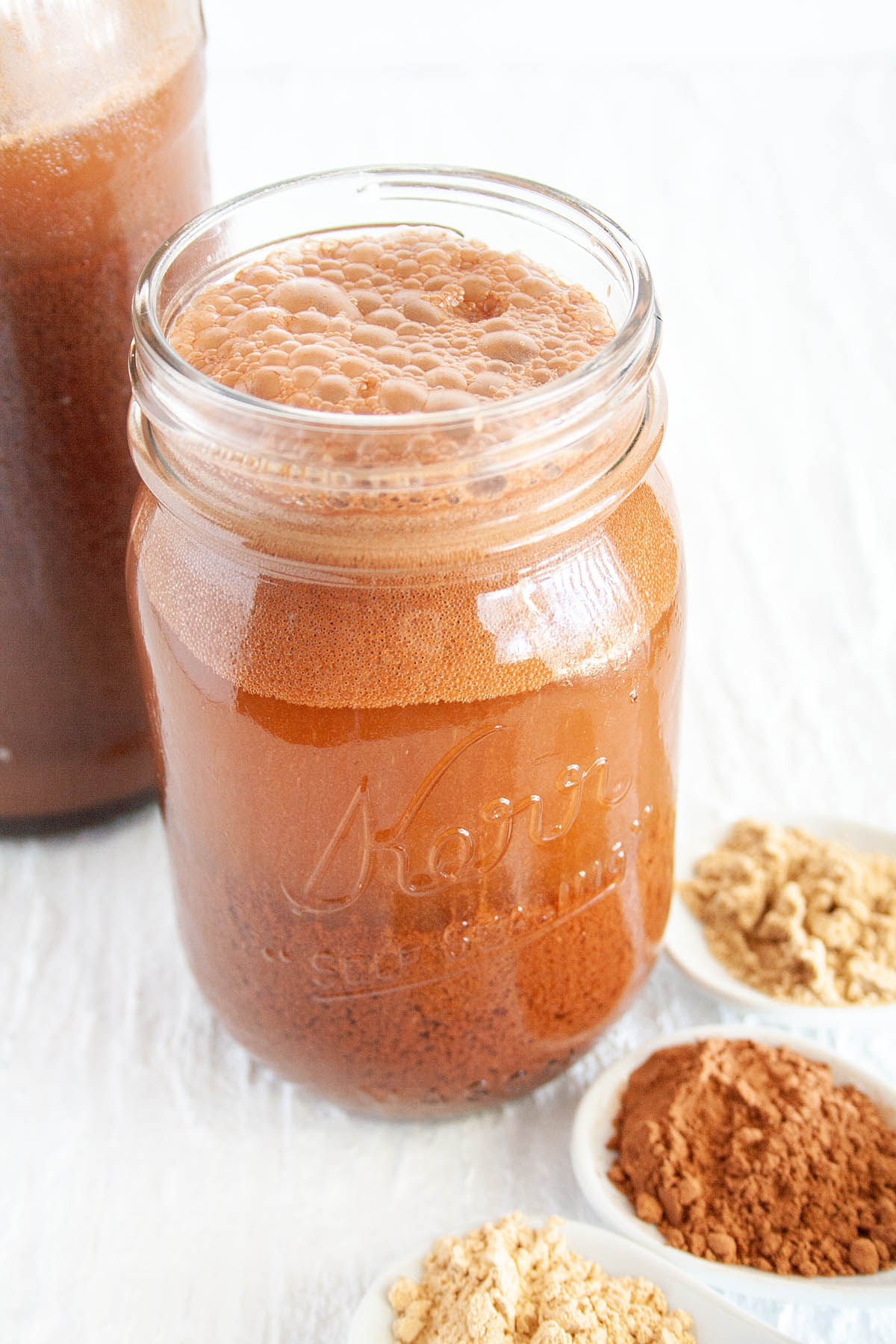
This Chocolate Superfood Kombucha is a powerhouse of nutrition. It has maca powder, cacao powder, and a mushroom blend of four different mushrooms.
You would never know there's maca and mushrooms in this. It tastes more chocolaty than anything else.
Other recipes with maca, mushrooms, and cacao powder are my Blueberry Smoothie Bowl with Superfoods and my Coffee with Superfoods.
Other recipes to try are my Kombucha with Lavender and Chocolate Mint Mojito Kombucha recipe.
Jump to:
❤️ Why You'll Love It
- It is chocolaty and flavorful.
- It's packed with superfood powders.
- It's cheaper than store-bought and you can control the ingredients.
Two Types of Fermentation
The first fermentation of kombucha is when you combine sweetened tea, a kombucha scoby, and some starter tea. You let it ferment for 7-21 days and the result is uncarbonated unflavored kombucha.
For the second fermentation, you remove the scoby and take that kombucha you made in the first fermentation and add flavor. You let it ferment for another 3-5 days in sealed bottles. The result is a fizzy-flavored drink.
You can ferment the flavored kombucha for up to 14 days. It all depends on the amount of sugar content in the flavor you're adding, and the temperature of the room.
Warmer temperatures will cause faster fermentation, and higher sugar content will also speed up fermentation.
What Makes Kombucha Fizzy?
The second fermentation is when kombucha gets fizzy. By putting it into a sealed container at room temperature and adding a sugar source (fruit and/or sweetener), carbon dioxide builds.
🧾 Ingredients
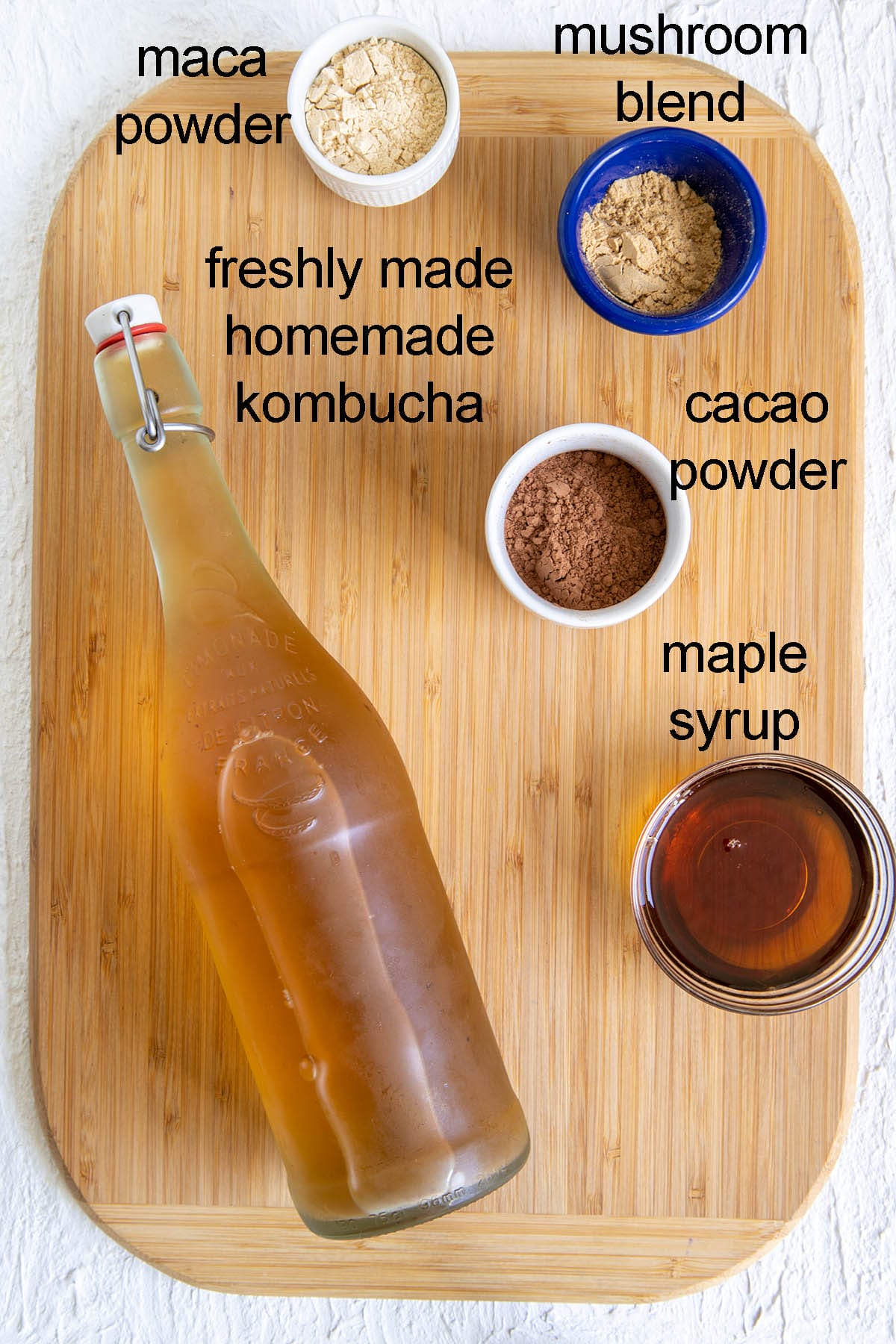
- Homemade kombucha: You'll need freshly made kombucha that has not been refrigerated yet.
- Cacao powder: Adds a chocolate flavor. You could use unsweetened cocoa powder.
- Maca powder: I used gelatinized maca powder because it is said to be easier to digest.
- Mushroom blend: I used a blend of mushroom powders, but you could use a single variety.
- Maple syrup: Adds sweetness. You could also use agave syrup or simple syrup.
To see the full list of ingredients with measurements and instructions, see the recipe card at the bottom of this post.
🥣 Supplies
- Funnel
- 4 (25 ounce) bottles with flip top lids
- Measuring cup
🔪 Instructions
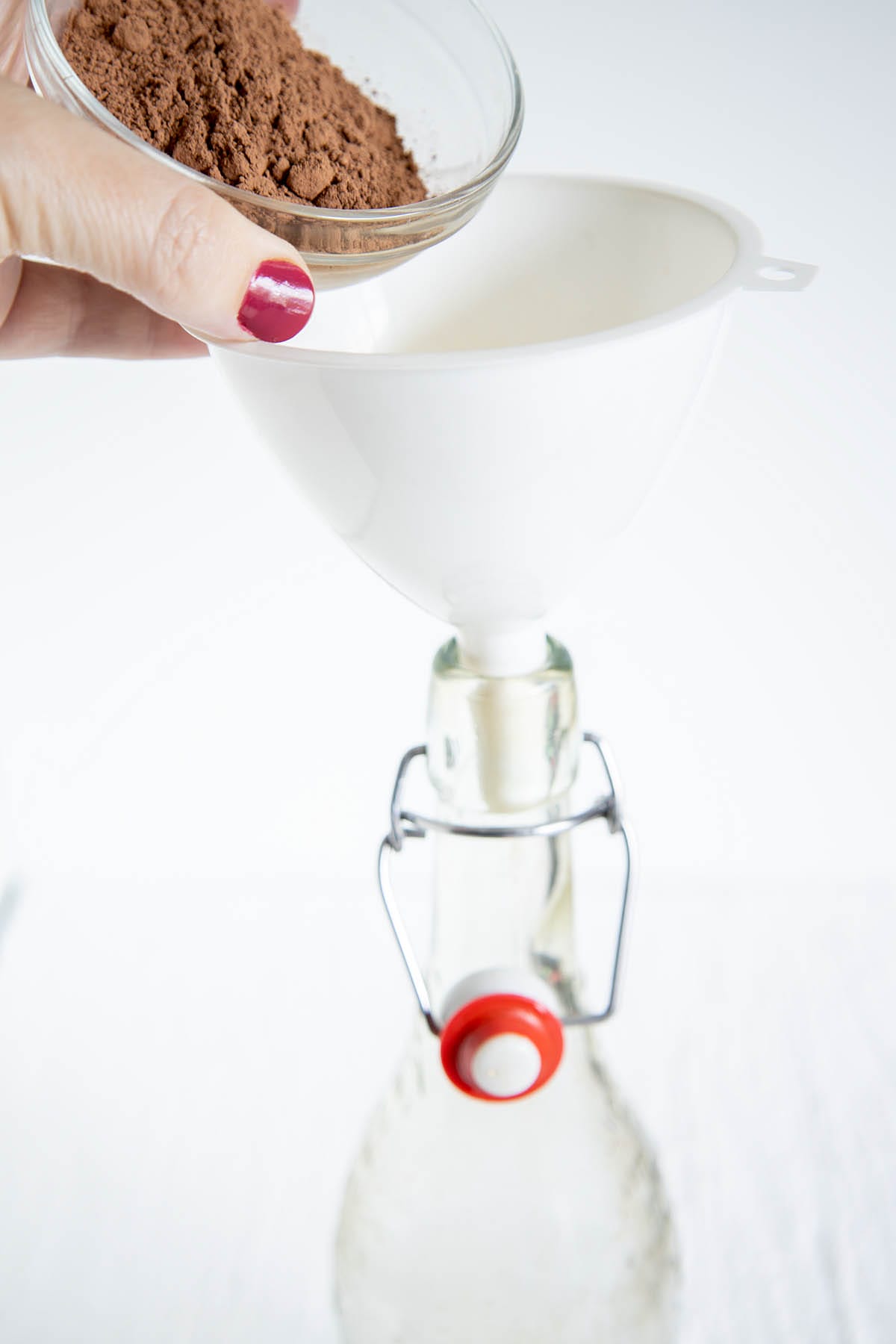
Step 1: Pour ¼ cup cacao powder into each bottle.
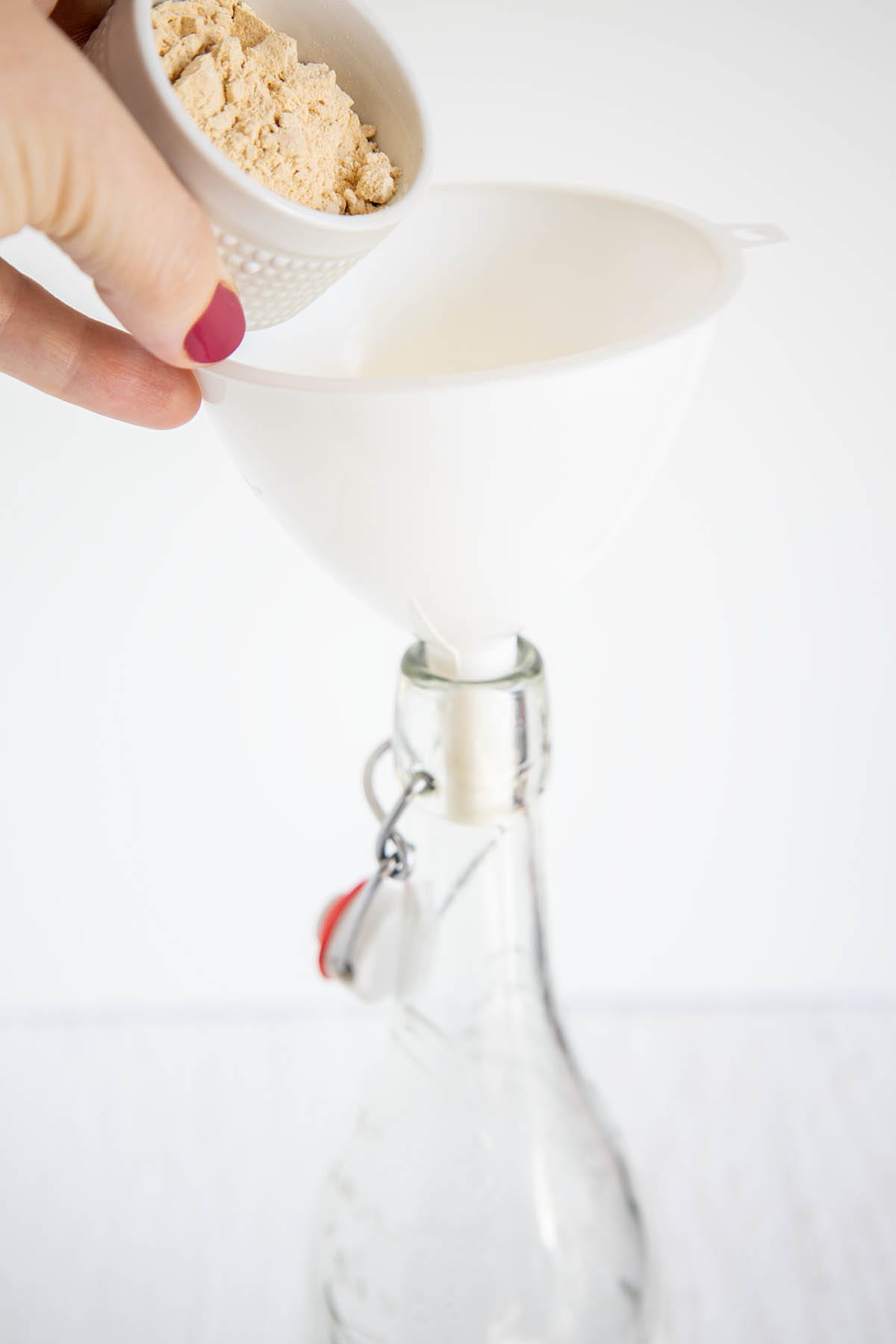
Step 2: Pour 2 tablespoons maca powder into each bottle.
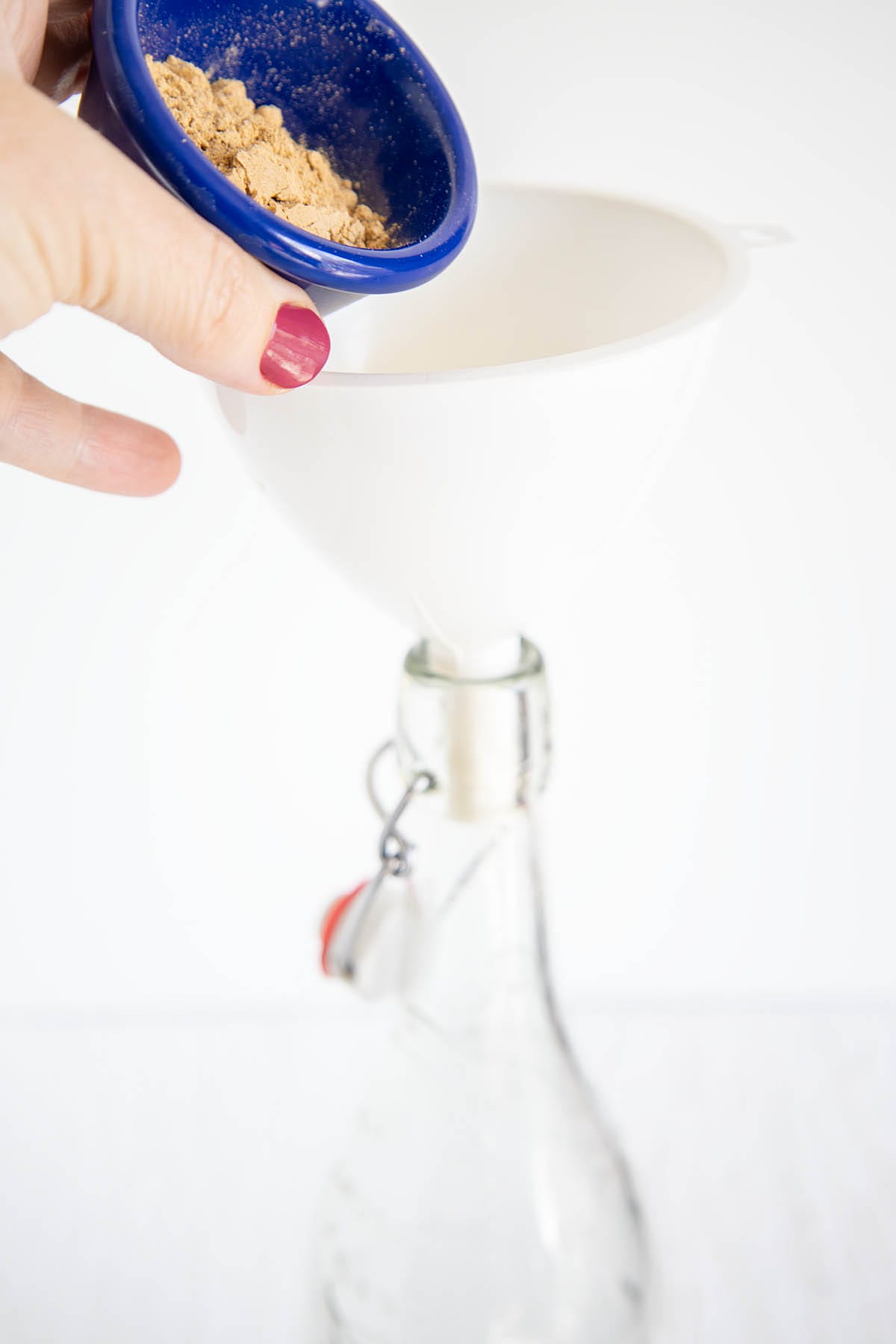
Step 3: Pour 1 tablespoon mushroom blend into each bottle.
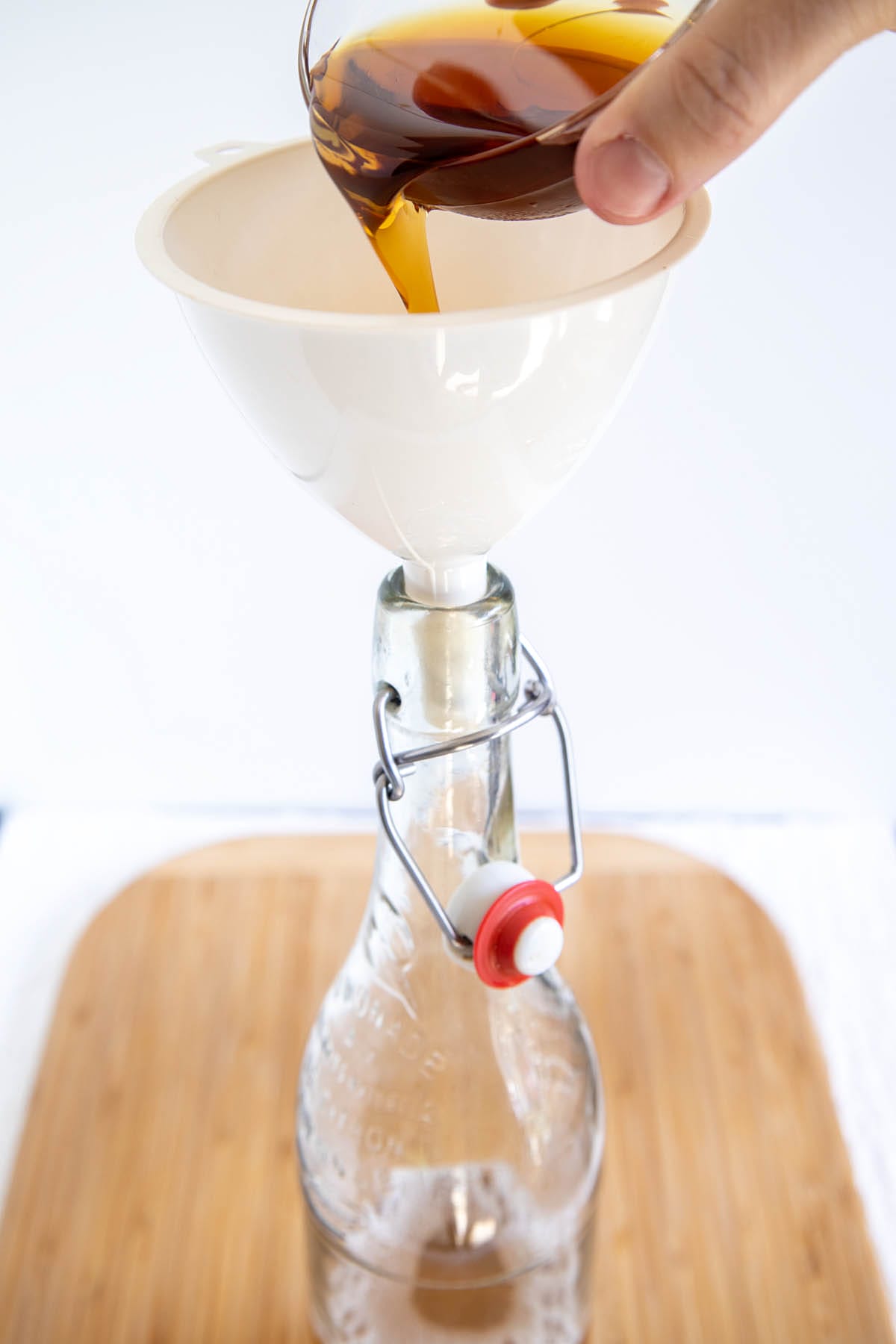
Step 4: Pour ¼ cup maple syrup into each bottle.
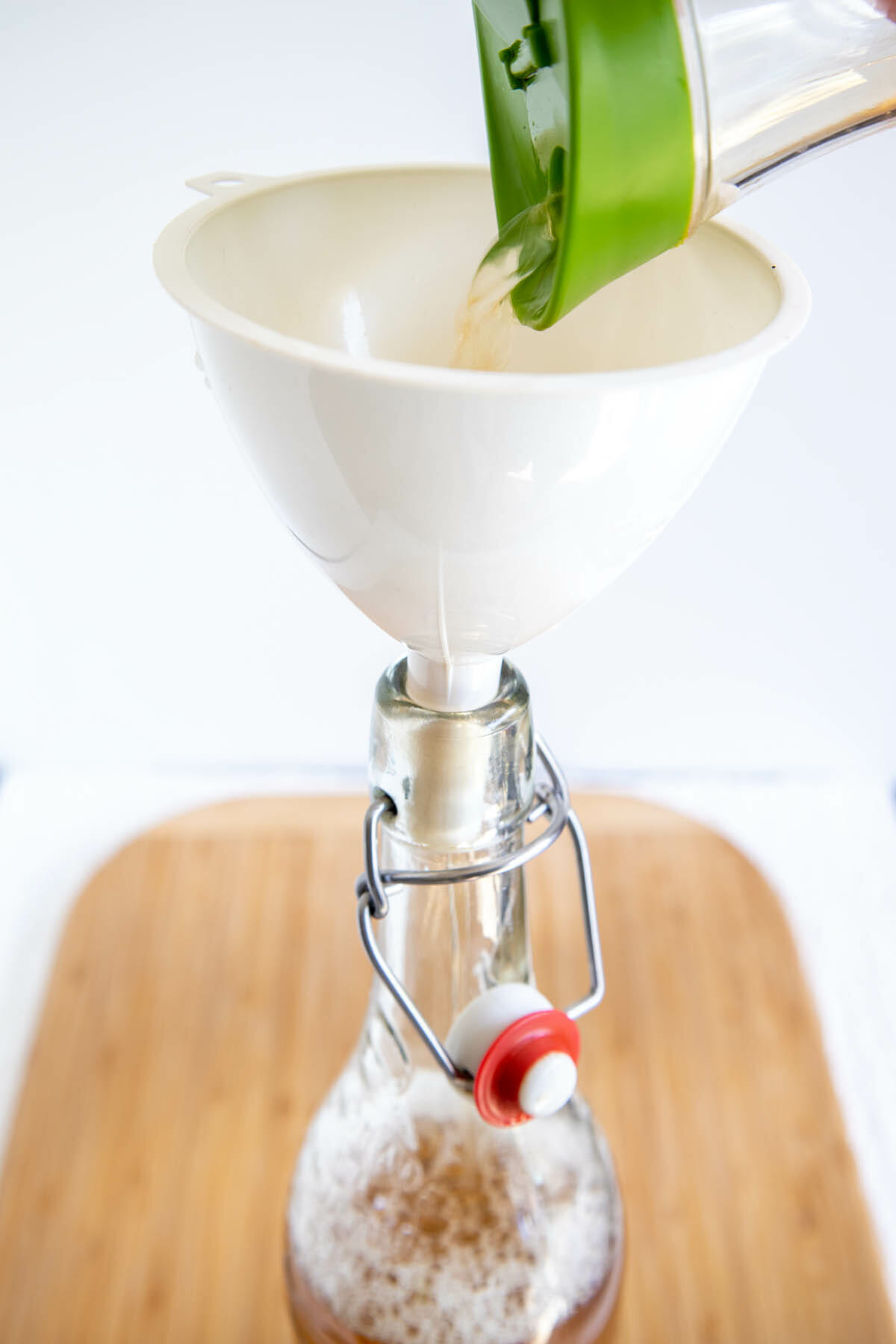
Step 5: Pour your freshly fermented homemade kombucha into the bottles, leaving 1-2" head space. Let sit 3-5 days.
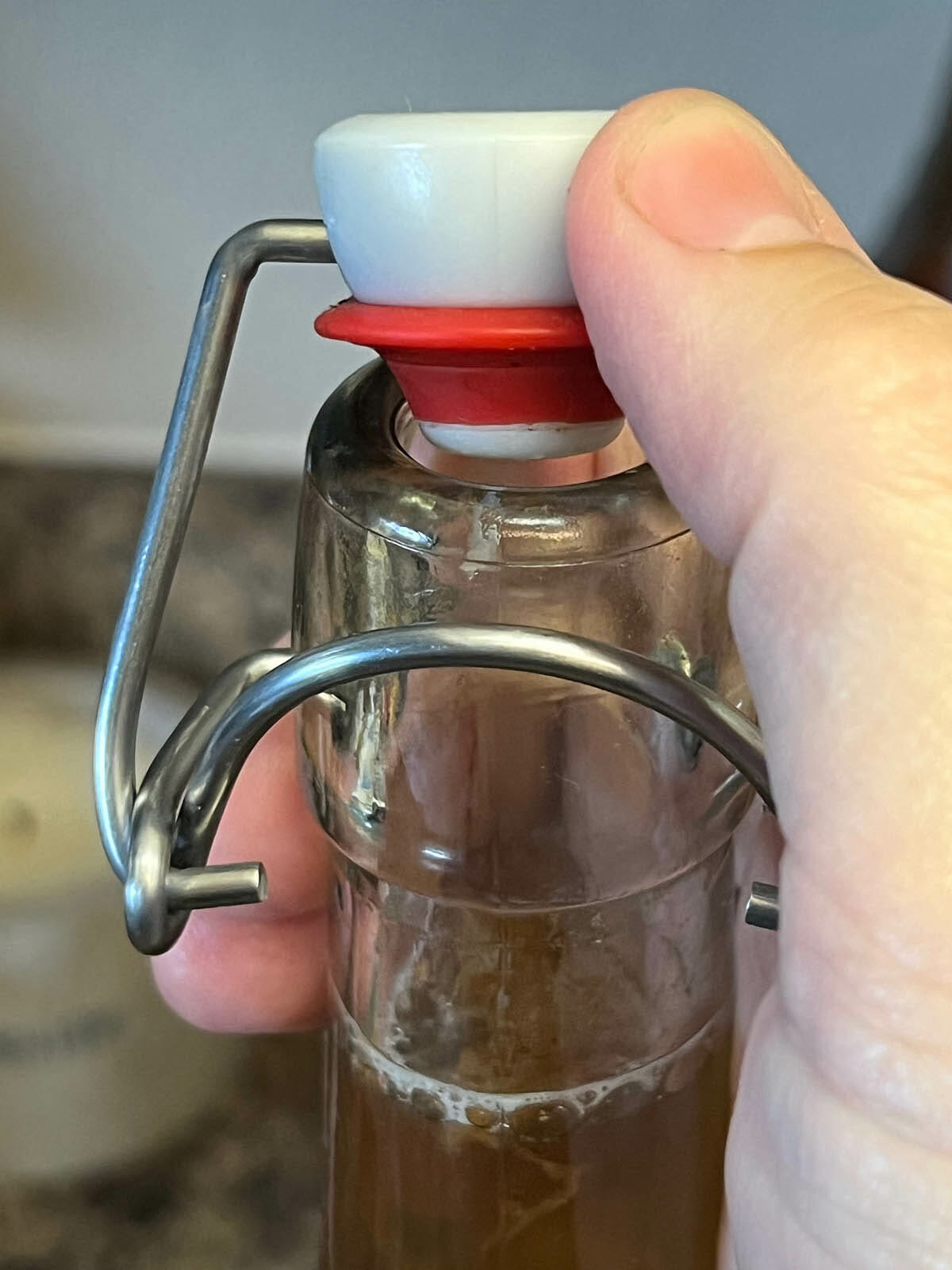
Step 6: Pop open the lids at least once a day. Pressure builds, and this allows it to escape.
Should I Burp My Second Ferment Kombucha?
Yes! If you don't you could have a mess. By adding sugar to the homemade kombucha and fermenting it a second time in bottles with swing-top lids, you're creating an environment for carbonation. If you don't allow it to escape, you'll have kombucha all over your kitchen.
How Long Does It Take To Get Fizzy Kombucha?
It can take anywhere from 1-14 days. It depends on a few things.
- It depends on how much sugar you have in the kombucha. (Sugar in the form of fruit and/or sweetener.) The more sugar, the faster you'll get carbonation.
- It also depends on the weather. Warmer temperature = faster carbonation. I've had bubbly kombucha after a day in summer months and bubbly kombucha after a week in colder months.
💭 Tips
- Shake the bottle before pouring a glassful. The powders will settle to the bottom.
- You can substitute the maple syrup with agave syrup, brown sugar, white sugar, or another sweetener.
- Refrigerate after the kombucha is done fermenting.
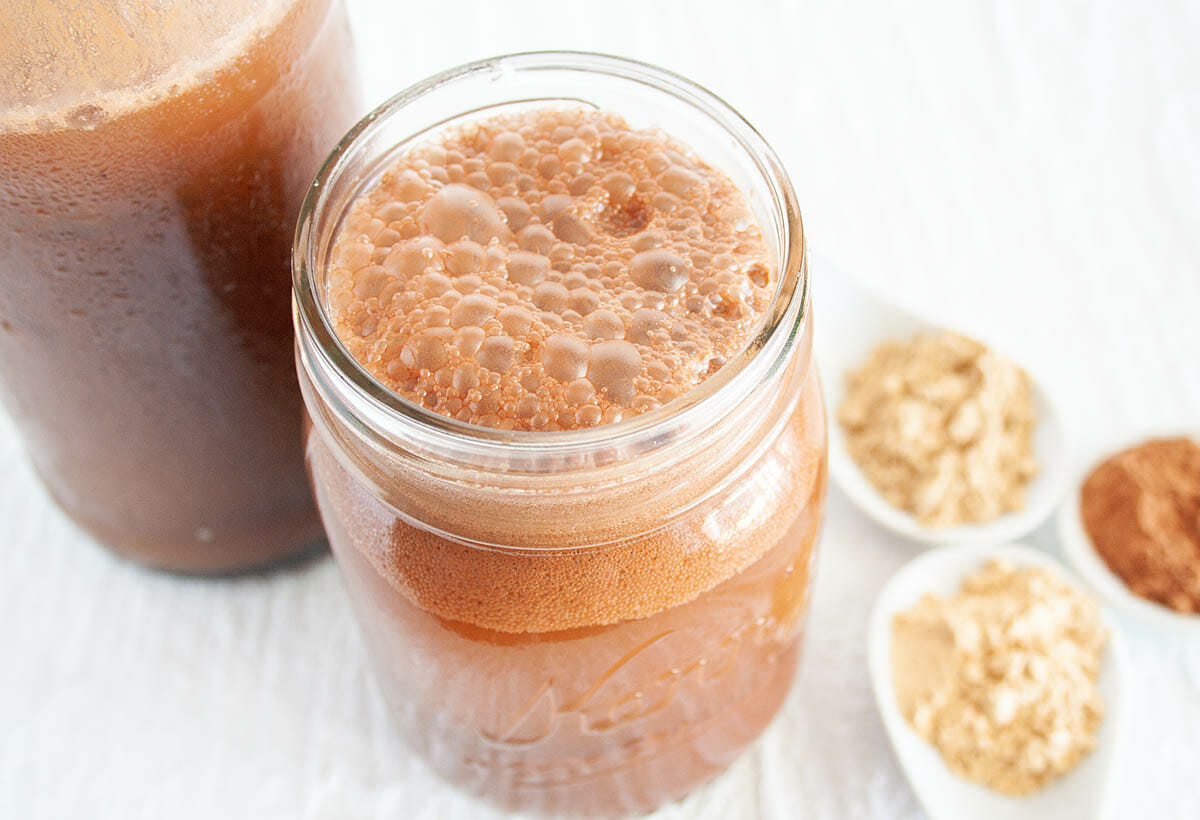
5 Secrets To Making Kombucha
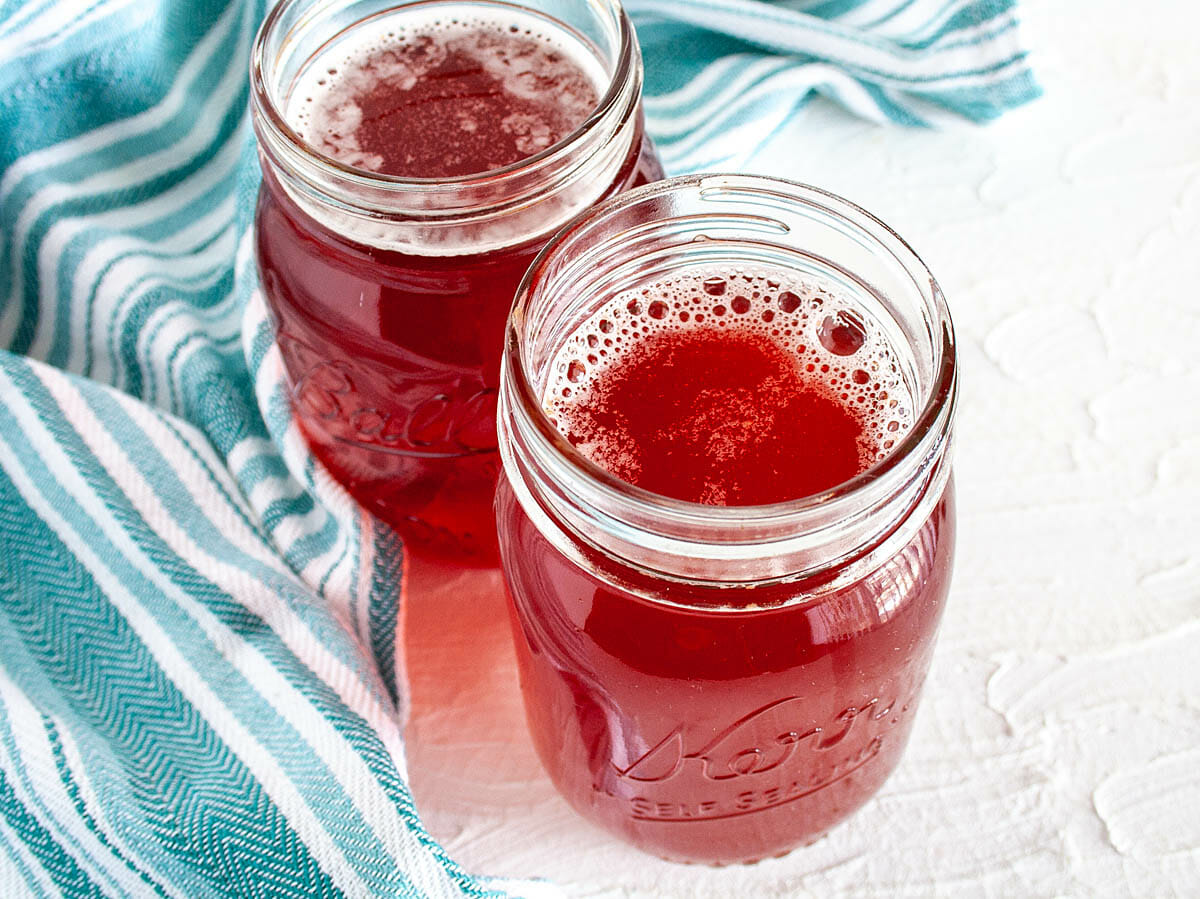
Kombucha just got easier!
We respect your privacy. Unsubscribe at any time.
Other Kombucha Recipes
Need a new kombucha scoby? I love Kombucha Kamp because they are a small family-owned business with over 5000 5 🌟 reviews. You'll get 10% off your first order when you sign up for their newsletter.
Not sure about maca and mushrooms in kombucha? Try my Chocolate Kombucha first. It has only cacao powder and maple syrup added.
I also have a Maca Powder Drink which is flavored with warming spices.
If you tried this Chocolate Superfood Kombucha Recipe or any other recipe on my website, please leave a ⭐️ star rating and let me know how you like it in the 💬 comments below. I love hearing from you!
📋 Recipe
Chocolate Superfood Kombucha
Equipment
- 4 (25 ounce) bottles with flip top lids or other air tight bottles
- Funnel
- Measuring cup
Ingredients
- 12 cups homemade kombucha
- 1 cup cacao powder
- ½ cup maca powder
- ¼ cup mushroom blend
- 1 cup maple syrup
Instructions
- Line up 4 (25 ounce) bottles with flip top lids or other air tight bottles.
- Pour ¼ cup cacao powder, 2 tablespoons maca powder, 1 tablespoon mushroom blend, and ¼ cup maple syrup into each 25 ounce bottle.
- Using a funnel, pour freshly made homemade kombucha into each 25 ounce bottle leaving 1-2" head space.
- Let bottles sit out (at 75° - 85°) 3-5 days, making sure to pop the lids each day (or a few times a day) to let out the pressure of the carbon dioxide. Taste each day to test its flavor and fizziness.
- Refrigerate when you are happy with the amount of fizz and flavor.
Nutrition
*Note: Nutrition information should be considered an estimate only. Different nutrition calculators give you different results.

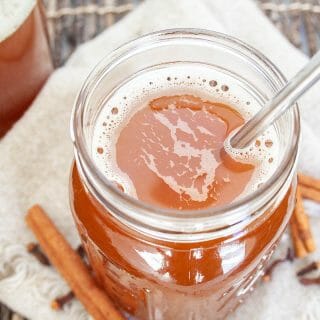
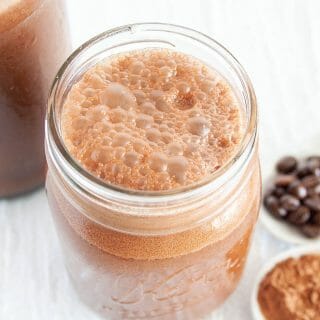
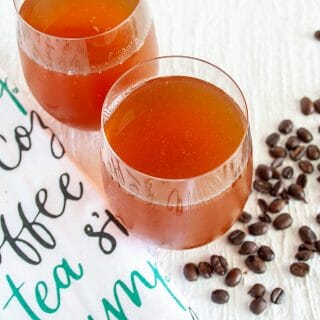
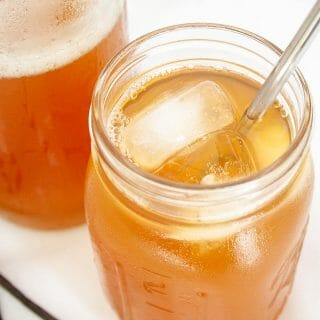
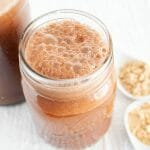
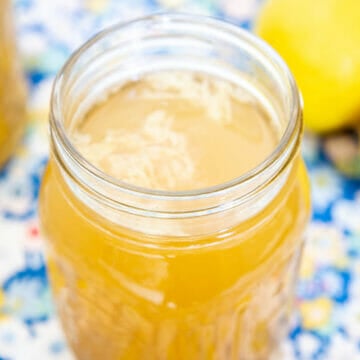
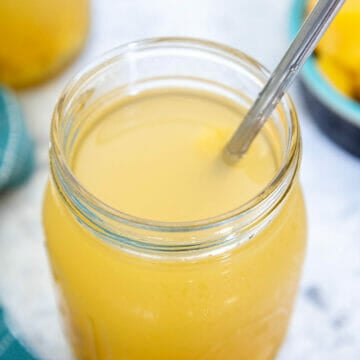

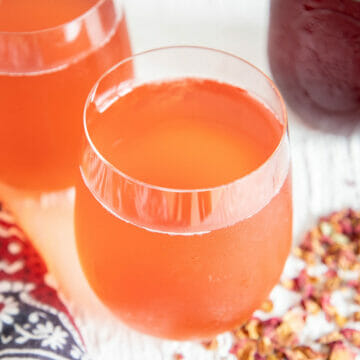

Comments
No Comments